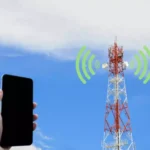
What is a Microcell?
Microcells are modules the size of your typical router or modem that connect to your broadband internet source and usually sit on a table-top or desk. In terms of cell phone signal, it’s like a “mini” cell phone tower in your home, hence the “micro” part of microcell. AT&T and Verizon call their product “Microcells/Femtocells” or “Network Extenders”, T-Mobile refers to them as “Cell Spots.” But in general, they are referred to as “Microcells”
How do they work?
When your cell phone signal struggles to enter your building or you’re in a rural area, this can help boost the signal of the service that you use. Once connected to your home network and is registered to your carrier’s account, it will broadcast RF signal that your phone would use normally. After a one-time purchase with no additional monthly fees, you can have better data speeds and call quality, and in general, better signal strength. In theory, this all seems like a practical solution, but what’s the catch?
Limitations
Microcells will need a landline internet source to connect to as a tether to the carrier’s services. Considering that most carriers have Wi-Fi Calling as an offered service, it may not seem worth it to the average customer. Though this may be the case, some phones don’t support this feature so using a phone with its native signal standard will be the best option. Once you have the piece of equipment meant for that carrier, it will only help whoever’s using that carrier and only those registered to the device. If you switch, you will have to purchase another unit for the carrier you’re switching to.
Even though this is using your landline, where data is usually unlimited, this will still use your cellular data allotment. Since this also drawing upon your Wi-Fi network, any wired or Wi-Fi data usage will slow down your home network some. This is also true on the opposite end. If your internet is slowed down by multiple devices, your microcell may not function as well as it should. With a common router, the range of the one device can be limited which is also true with microcells as they are rated for about 30-40 feet of broadcast radius depending on interior materials. In many cases, it’s a good idea to keep everything separate in which a passive cellular signal booster would be appropriate.
Advantages of a passive system?
With a passive BDA cellular system or better known as a cellphone signal booster, the purchase is one time, with no monthly fees. It also doesn’t depend on a landline or suffers from speed or congestion problems. With a signal booster, antennas can be installed wherever needed and can be expanded. A system can be custom tailored for your needs and for any carrier or can be switched at any time or you may decide to go with a multi-carrier system. These systems take a more advanced installation of equipment, and a proper installer would be recommended. CellTeks, as an industry expert in cellular signal boosting and repair, are fully equipped.
How do I choose?
When choosing which is the best option, your needs should have the biggest impact on your decision. If you don’t plan on switching carriers or need service in just a small area a microcell may be your best option. If you struggle with having weaker or inconsistent signal and want it throughout your house, a cellphone signal booster solution would be the way to go with the help of CellTeks. Feel free to call us at 830-249-8999 or if you’re having issues, visit our Contact Us page and a representative of CellTeks will be happy to discuss in further detail a solution for you!






